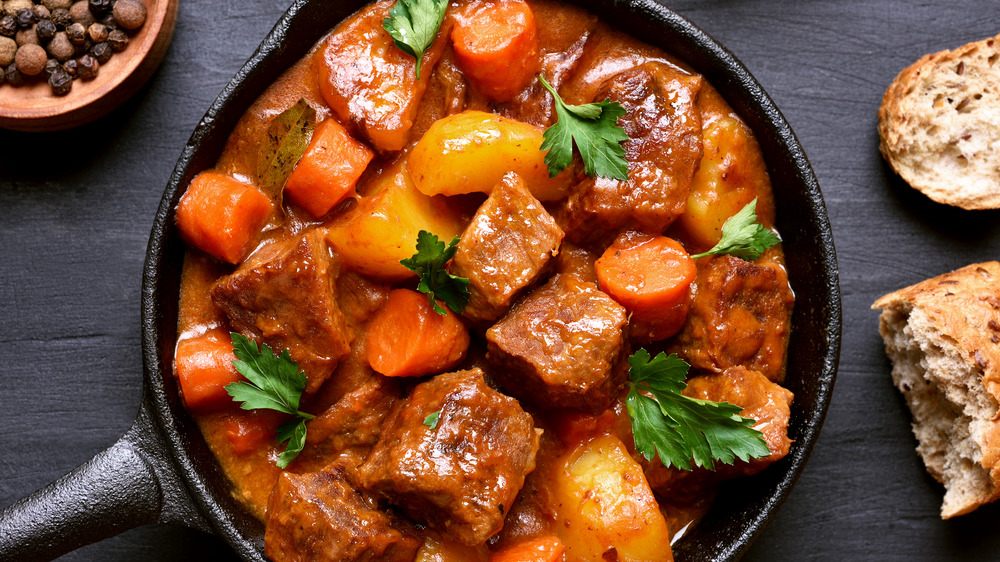The Real Difference Between Stroganoff And Goulash
American comfort food has macaroni and cheese and mashed potatoes. Italian comfort food has baked ziti and spaghetti and meatballs. Mexican comfort food has enchiladas and quesadillas. But what about Slavic comfort food? Lesser known — but just as delicious — the traditional dishes of Eastern Europe are hearty and meaty, and just what you'd want on a cold winter day.
Two of the most popular Slavic mainstays have made their way into many American kitchens, too. You've likely heard of or maybe even eaten goulash or beef stroganoff here in the U.S. Both dishes are saucy, filled with meat and veggies, and usually served with some sort of starch — meaning the two dishes would seem interchangeable to most of us. But not only do their origins lie in different countries (History Today explains goulash is from Hungary, while Fork + Plate says stroganoff is from Russia), there's also another key difference between the two. Hint: It has to do with how they're prepared and served.
Goulash is a stew, and stroganoff is a sauce
While some American versions of goulash and stroganoff have blurred the lines between what sets the two dishes apart, according to Seasoned Advice, goulash is traditionally a stew while stroganoff is a sauce. Goulash is more of a hearty soup that contains plenty of meat and vegetables and often noodles. It's also usually cooked in a slow cooker as it's made with a cheaper cut of meat that needs time to become tender.
Stroganoff, on the other hand, is pan-fried on the stove and consists of steak, mushrooms, and onions that are tossed with a sauce made of brandy and sour cream. It's traditionally served over rice instead of noodles. However, Seasoned Advice notes that things get tricky in the U.S. when trying to tell the two apart because both dishes contain paprika as a key ingredient and many Americans serve stroganoff over noodles, too, which can make it seem more like goulash than authentic stroganoff.

